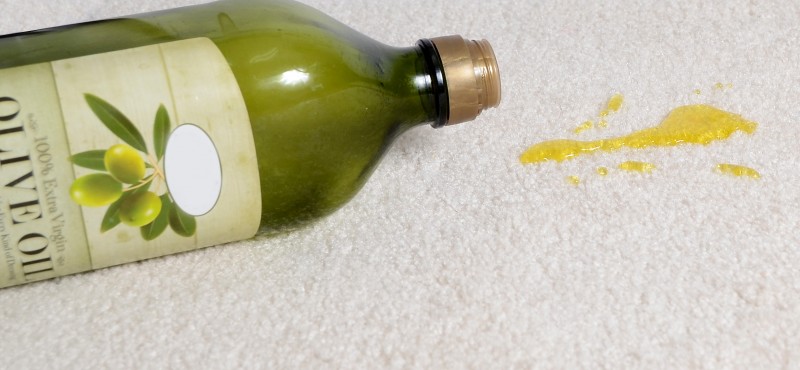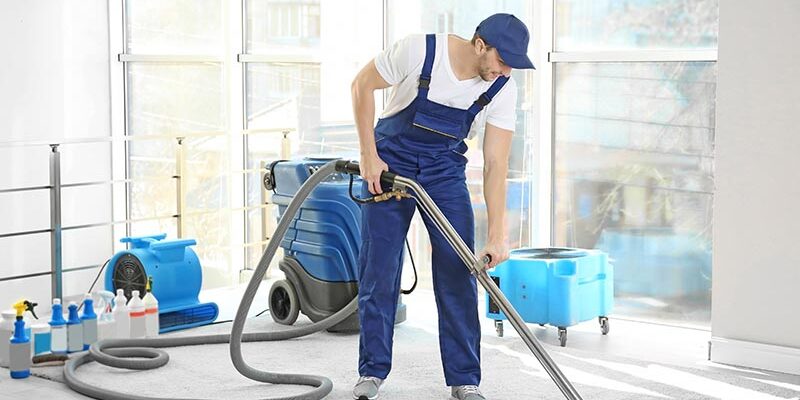The Spot and Stain Removal Process

The accumulation of soil on textiles is one of the factors that cause textiles to deteriorate.
Spilled food, for example, can turn a textile that is normally unappetizing to insects into an attractive meal for moths and carpet beetles. The “ground-in” dirt can increase the abrasion of yarns, causing them to weaken and lose luster.
Soil removal is one of the most important aspects of caring for textiles if they are to be maintained in good condition.
Soil deposited on textiles is made up of different materials. Some types of soil are soluble in water, other types are insoluble. Soluble soil is made up of organic acids, mineral acids, alkaline substances, blood, starches and sugars. All of these substances dissolve in cool or warm water, although they may require special stain removal techniques.
Water is an effective solvent used widely in the process known as wet cleaning.
Water alone will remove water-soluble soil, but insoluble soils may be held onto the textile by physical means such as films, greases or oils. Such soils require the use of some kind of cleaning aid.
For any detergent to clean, it has to interface with the soil. Unlike laundering, in carpet cleaning, whether shampooing or hot water extraction, the detergent comes in contact with the soil for a very short period of time.
In shampooing, very little water is employed and in hot water extraction there is less mechanical action to dislodge the soil particles. Many professional cleaners apply presprays to heavily soiled areas.
Just as dried-out food left on a plate is much easier to clean if pre-soaked, research has shown that leaving presprays on the soiled areas for about 10 minutes results in significant improvement in performance, and will greatly aid in spot removal (stains being more challenging and needing additional treatment).
If the prespray is left on for too short a time period, the improvement will be too small; if left for too long a time period, there will be a risk of overwetting the carpet, causing distortion, browning, dye bleed or rapid re-soiling after cleaning.
You have to keep in mind you are cleaning the carpet surface and not the backing.
Using organic solvents
Organic solvents, which are often called “dry solvents,” can dissolve some types of dirt; agitation is often necessary to aid dirt removal. Sometimes surfactants and water are added to the organic solvent.
The low surface tension of all dry solvents allows wetting of the textile fibers without the addition of surfactants.
Rinsing and drying completes the solvent cleaning process.
However, wetting of fibers is not a sufficient prerequisite for satisfactory cleaning results. Wetting allows close solvent fiber interaction.
In hydrophilic textiles like wool, cotton and rayon, swelling is not a big issue, but in non-polar fibers (see “Polarity” sidebar) such as polyester or olefin, the dry solvent could pose a problem by retaining the dry solvent in the textile and affecting its properties.
Normally, a solvent forms a uniform solution with the soil it dissolves. Most commercial cleaners use solvents that evaporate rapidly so that the bulk of the solvent can be removed by good ventilation.
A good, effective dry solvent will dissolve the soil rapidly, evaporates quickly, removes stubborn soils like waxes or polymers, is non-flammable with reduced toxicity; but unfortunately, with ever accumulating new environmental/health regulations, it has become impossible to find an ideal solvent fitting all the criteria.
Troublesome stains
There are times in the process of carpet cleaning, such as shampooing or hot water extraction, that you encounter stains that will not respond to normal cleaning procedures.
In these cases, there are a variety of materials and processes that can help remove these stains. They can range from solvents, oxidizing/reducing agents, freezing agents for removing chewing gum, gels, rust removers, acids, alkalis, etc. How long should the contact time be? It all depends on the stain and procedure attempted.
If the stain is fresh, it may not present much of a problem; if it is urine, a spray extraction machine will generally suffice.
But if it is a colored fruit drink on a nylon 6 carpet, the color uptake by the carpet is rapid; with nylon 6,6, it is slower but still occurs. You may be able to lessen the intensity of the stain by utilizing three percent hydrogen peroxide and using the heat transfer method described in the next paragraph.
Use a 50/50 mixture of hydrogen peroxide and sudsy ammonia, dampen a white cotton towel and apply it onto the stain, then place a hot electric iron (past the steam setting) on the wet cotton towel and you will note some transfer in color. Repeat the procedure using another area on the towel, (use impermeable rubber gloves as the hydrogen peroxide evaporates slower than water and gets concentrated and is liable to burn your skin). By this method, the carpet dye may transfer as well, so be careful.
Bleaching a stain using an oxidizing or a reducing agent will show rapid results, while the use of enzymes to digest a stain will take longer.
Solid stains also take longer; if the material can be broken up by a spatula or a stainless steel spoon, it will increase the surface to help break it down.
If dealing with wax, a warm iron can be used over the absorbent paper towel, but do not overheat and melt the fibers. Chewing gum will require freezing and/or solvent.
Be careful with organic solvents as they may be flammable, toxic or may adversely affect the backing seams. Sometimes, marking pens are used on the inside of upholstery furniture and they may bleed through. When using solvents, use the mildest solvent first, such as non-polar mineral spirits, and gradually move towards more aggressive solvents, such as glycol ethers, and rinse.
Nasty surprises
There are some stains that may only appear after the carpet has been cleaned.
These could be latent stains due to previous sprays, spills or by tracking (intended or unintended) products such as insecticides, foot powder, bleaches or face creams, which can destroy carpet dye.
There are many residues that, upon becoming wet due to carpet cleaning moisture, cause carpet dyes to fade or to be removed completely.
If this happens to you, you can try to explain to the customer that the cleaning solution used to clean the carpet, coming in contact with the affected area of some unknown residue, has adversely affected the area. This is not something the customer will want to hear, but it is accurate information.
Light or fume faded stains are not really stains, but discolorations, and will not respond to cleaning. In such cases, it may become necessary to spot dye the carpet or replace the section from a remnant, if one is available, or from an inconspicuous area, such as a closet. The color of the replaced piece may appear brighter than the rest of carpet, and the wear pattern may not match as well.
Aziz Ullah, Ph.D., MBA, is president of Fabpro Manufacturing, a leading formulator of carpet and upholstery cleaning products. He is a member of the American Chemical Society, senior member of the American Association of Textile Chemists and Colorists and a member of The Textile Institute (UK). He can be reached at www.Fabpro.com.












